The Samsung Galaxy Note7 (S820) Review
by Joshua Ho on August 16, 2016 9:00 AM ESTSystem Performance
As previously mentioned this year a major goal of ours was to focus on benchmarks with metrics that better indicate user experience rather than being subject to additional layers of indirection in addition to updating our previously used benchmarks. Probably one of the hardest problems to tackle from a testing perspective is capturing what it means to have a smooth and fast phone, and with the right benchmarks you can actually start to test for these things in a meaningful way instead of just relying on a reviewer’s word. In addition to new benchmarks, we’ve attempted to update existing types of benchmarks with tests that are more realistic and more useful rather than simple microbenchmarks that can be easily optimized against without any meaningful user experience improvements. With that said, let's get into the results.
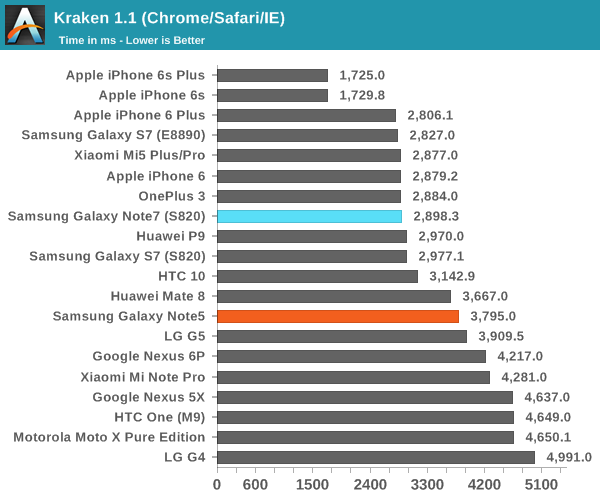
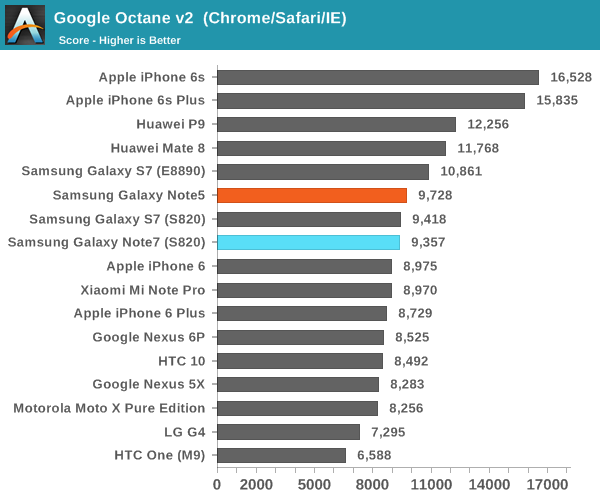
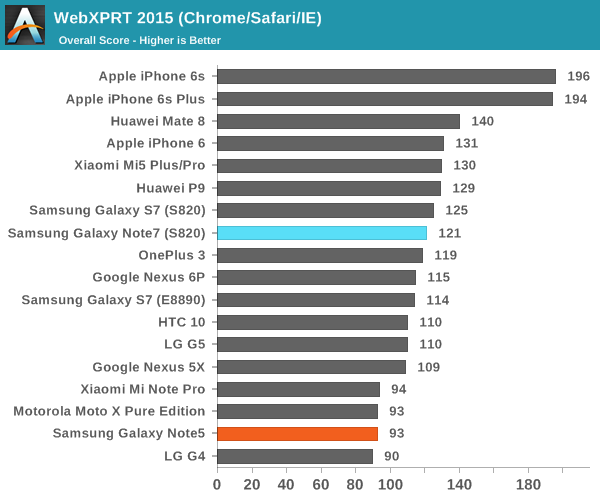
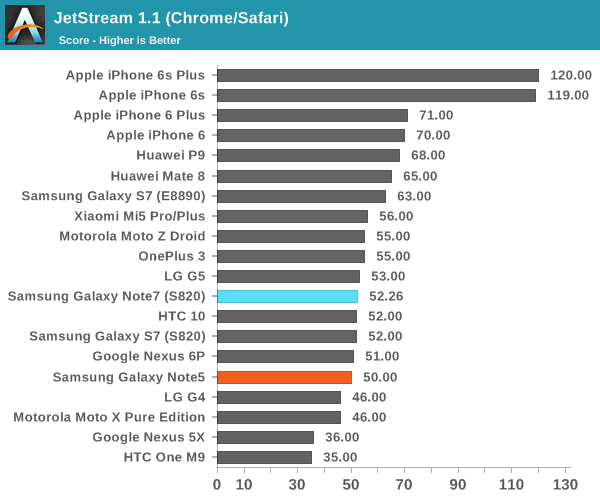

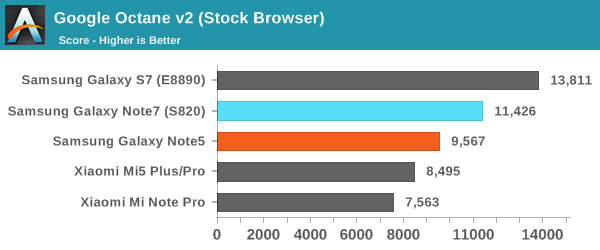
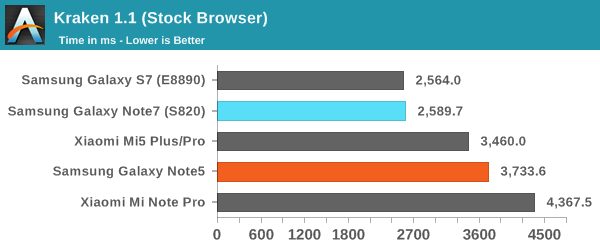
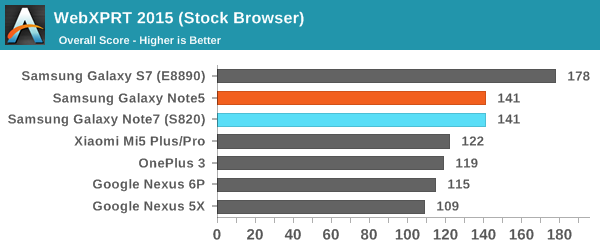
Browser performance here is pretty much in line with expectations as pretty much every OEM using Snapdragon 820 is going to be using the same basic BSP and most of the optimizations here are going to be done by Qualcomm rather than the OEMs.
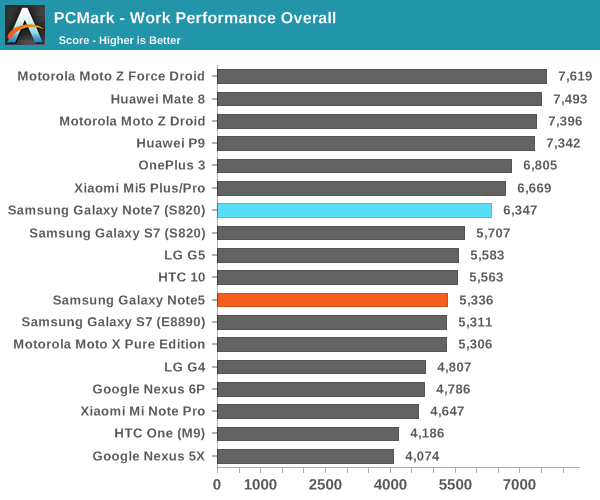
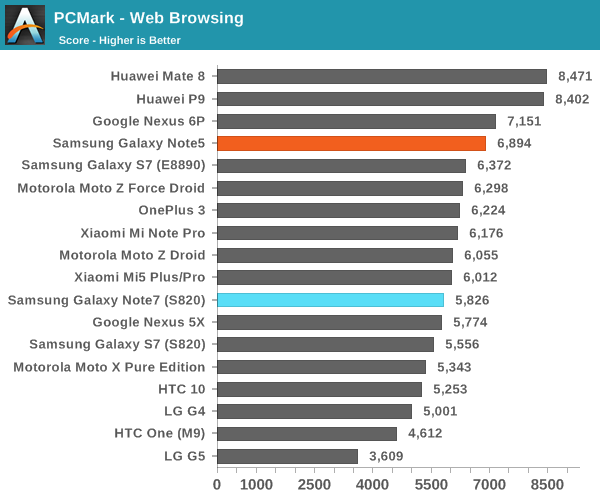
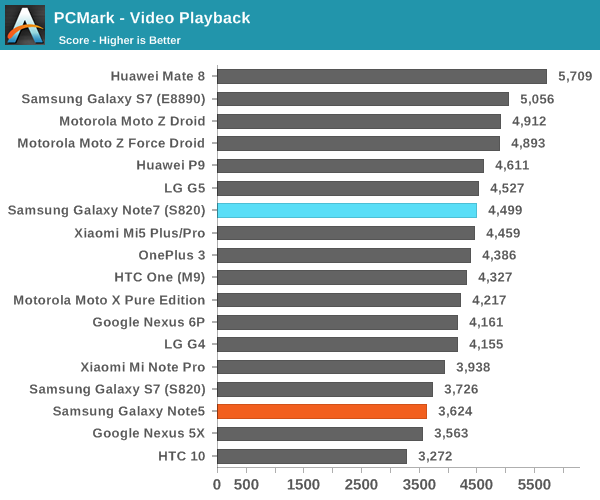
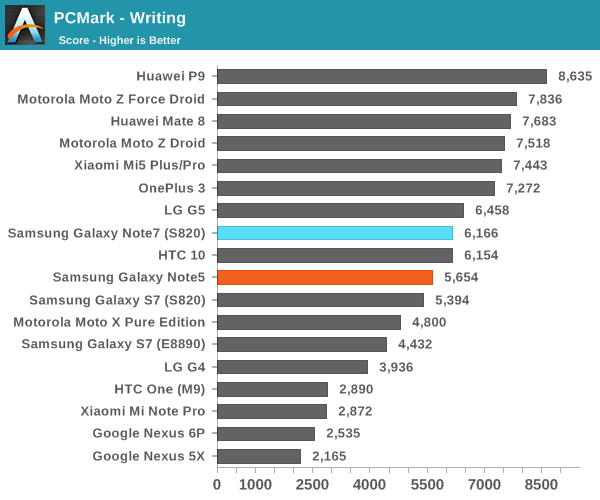
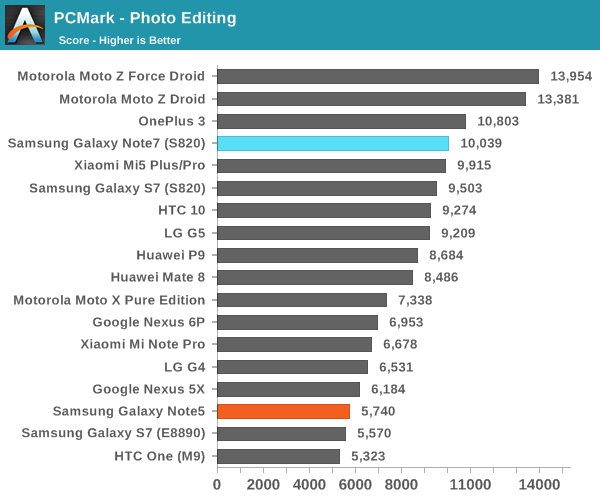
Again, performance is in line with expectation in PCMark, although there are some improvements here and there that are primarily centered about web browsing performance which is almost constantly being improved as developers figure out new optimizations for browsers. With that said we can move on to Discomark, which is a true high level benchmark designed to show exactly how quickly a suite of common Google and OEM applications load from NAND or from RAM.
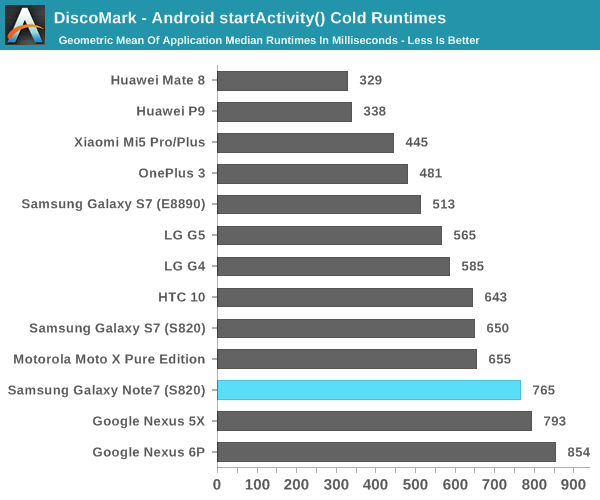
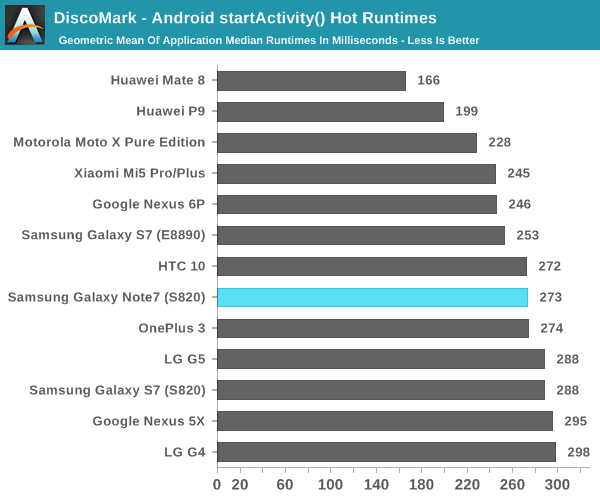
Here the Galaxy Note7 shows some improvement on hot runtimes relative to the Galaxy S7, but the cold runtimes have dropped for some reason. It looks like much of the delta here is due to Dropbox which is now running significantly slower on the Galaxy Note7. I suspect that this is related to possible changes in Dropbox or its interaction with TouchWiz rather than any significant underlying difference in system performance relative to the Galaxy S7. Overall, the Galaxy Note7 performs about where you'd expect from a Snapdragon 820 device from Samsung given the performance of the Galaxy S7.












202 Comments
View All Comments
vivekvs1992 - Tuesday, September 6, 2016 - link
i am currently using an s7 edge..just some things to say out loud...first of all what a review..its an opinion of a reviewer written here rather than a copy paste from a samsung pr page...kudos..secondly i have to point out 3 things
1. the edge is awesome if you like it..i watch a lot of movies on it, all sitcoms, etc, so the videos look awesome if they are movies..somewhat stretched if watching 16:9 videos.
2 the display looks awesome..the pictures appear flush to the glass surface..a neat change after using an xperia z1
3. i use a transparent skin rather than tempered glass with back cover..works wonders(i use gadgetshieldz..)my dog pulled at my headphones and the phone fell down from my table face down..to problems at all..
mgutt - Tuesday, September 20, 2016 - link
How does the battery life profit from reducing the resolution to 720p or 1080p and is it possible to reduce the resolution without a permanent notification?